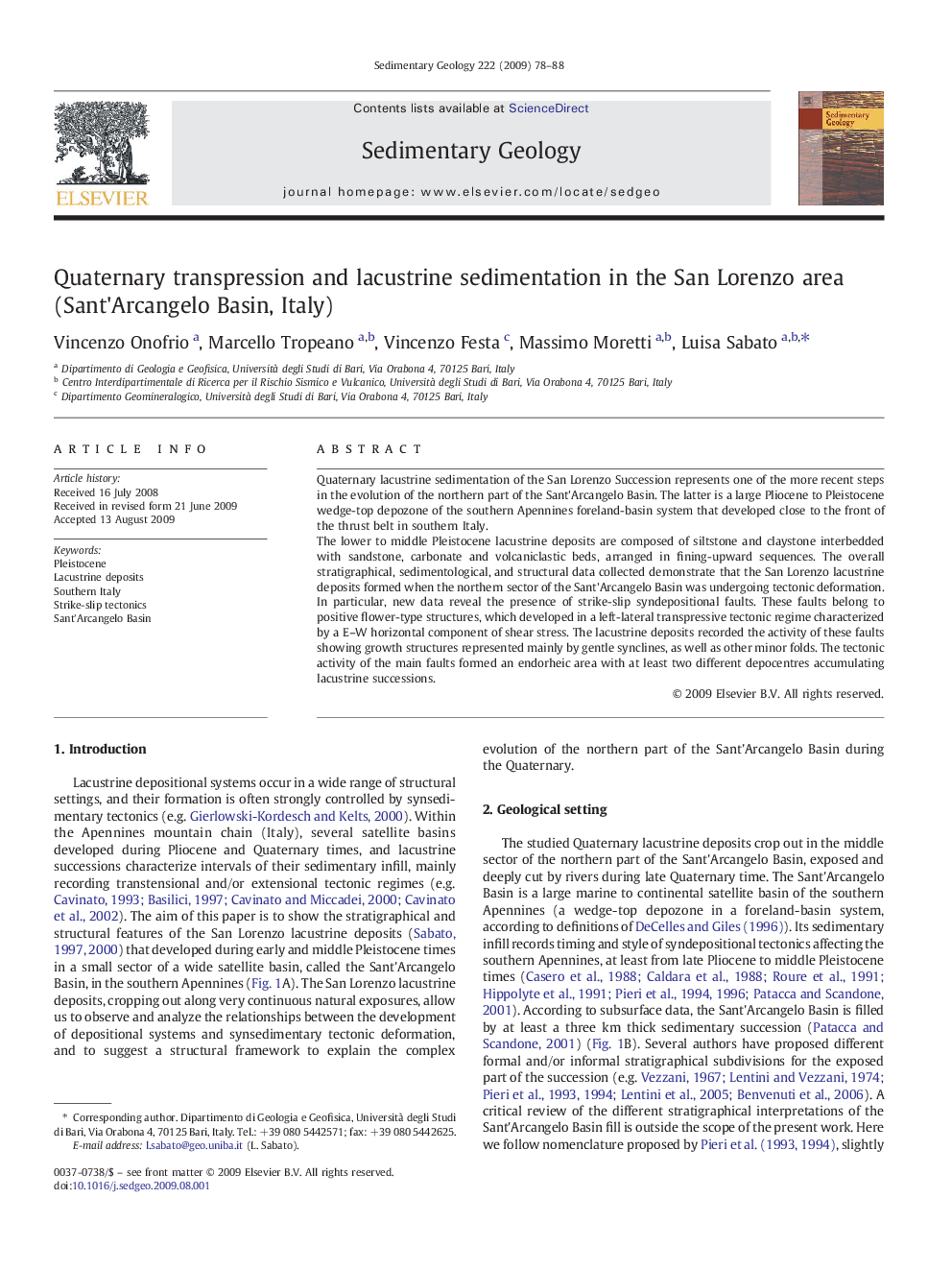| Article ID | Journal | Published Year | Pages | File Type |
|---|---|---|---|---|
| 4690378 | Sedimentary Geology | 2009 | 11 Pages |
Quaternary lacustrine sedimentation of the San Lorenzo Succession represents one of the more recent steps in the evolution of the northern part of the Sant'Arcangelo Basin. The latter is a large Pliocene to Pleistocene wedge-top depozone of the southern Apennines foreland-basin system that developed close to the front of the thrust belt in southern Italy.The lower to middle Pleistocene lacustrine deposits are composed of siltstone and claystone interbedded with sandstone, carbonate and volcaniclastic beds, arranged in fining-upward sequences. The overall stratigraphical, sedimentological, and structural data collected demonstrate that the San Lorenzo lacustrine deposits formed when the northern sector of the Sant'Arcangelo Basin was undergoing tectonic deformation. In particular, new data reveal the presence of strike-slip syndepositional faults. These faults belong to positive flower-type structures, which developed in a left-lateral transpressive tectonic regime characterized by a E–W horizontal component of shear stress. The lacustrine deposits recorded the activity of these faults showing growth structures represented mainly by gentle synclines, as well as other minor folds. The tectonic activity of the main faults formed an endorheic area with at least two different depocentres accumulating lacustrine successions.
